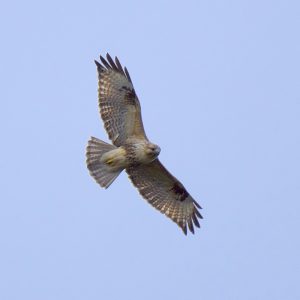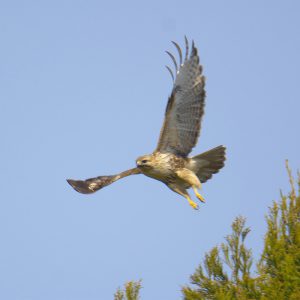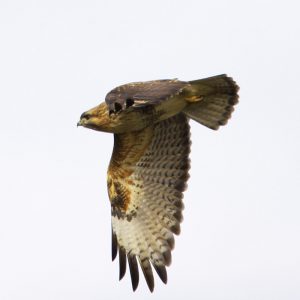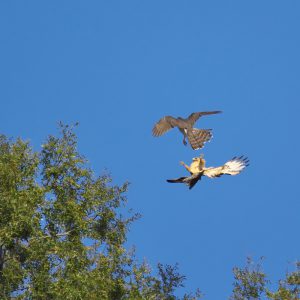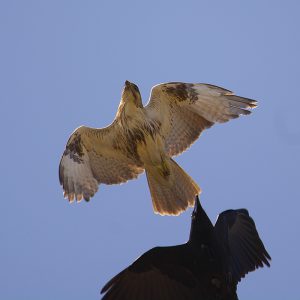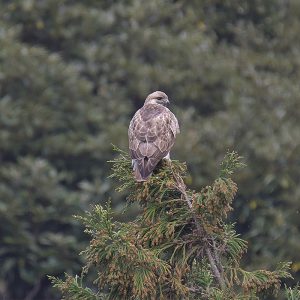むなかたが集まる
電子データベース
電子データベース
ノスリ
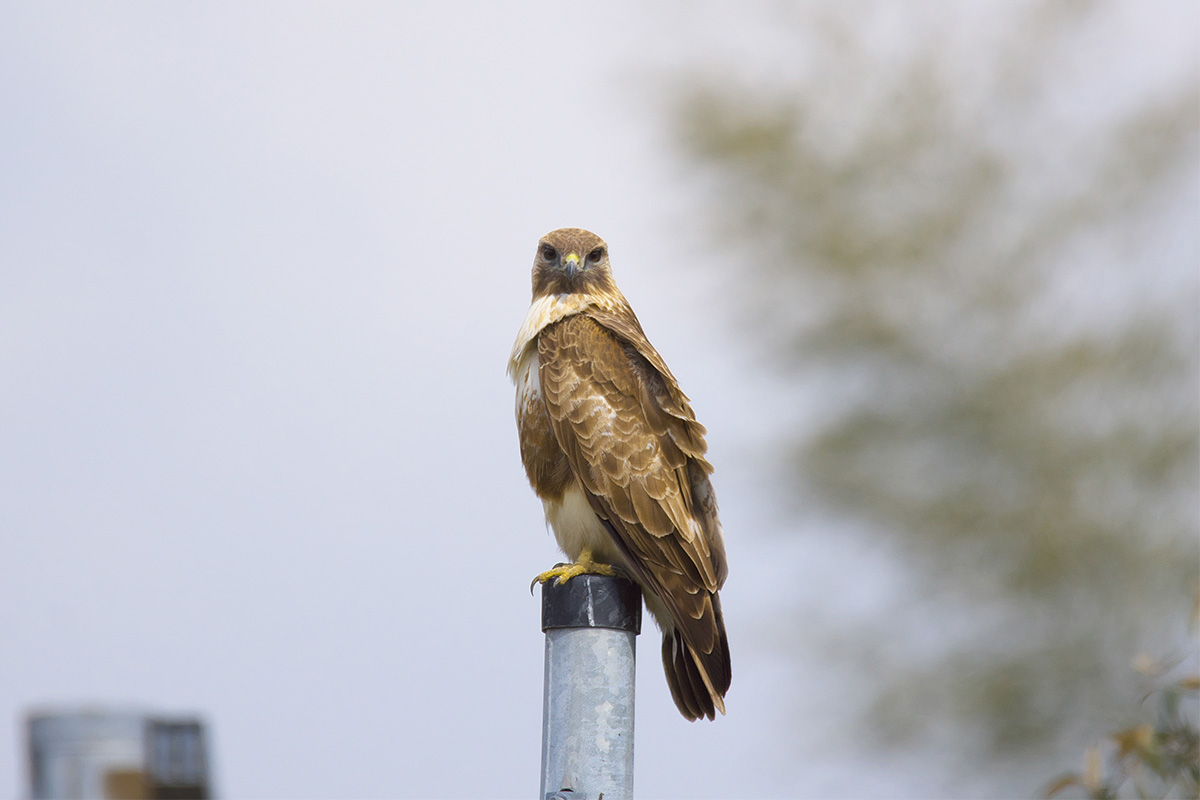
| 種目 | ノスリ (鵟) | 分類 |
タカ目 タカ科 ノスリ属 |
学名 | Buteo buteo | 英名 | Common Buzzard |
|---|---|---|---|---|---|---|---|
|
ノスリ (鵟) |
タカ目 タカ科 ノスリ属 |
Buteo buteo | Common Buzzard |
宗像市でみられる場所・時期
宗像には,冬鳥として渡来し,11月から3月にかけて見ることができる。
市内の山地や丘陵地,農耕地上空などで見られる。山麓の水田の電柱にとまっているところをよく見かける。宗像大島や地島では比較的普通に見られる。
特徴
全長雄52㎝,雌56㎝。カラス大の猛禽類で雌雄はほぼ同色である。
頭頂から背以下の体上面は黒褐色で淡褐色の羽縁や斑がある。過眼線,顎線は黒褐色で,腮以下の体下面は淡褐色で胸,腹からは脇に黒褐色の大きな斑模様があるが,そのパターンは多様である。胸や腹以下の下面に黒褐色の縦斑がある。尾の上面は黒褐色で,島眼には一様に黒く見えることが多い。尾の下面は褐色で黒褐色の横斑がある。嘴は黒く,蝋膜,嘴基部,足は黄色である。幼鳥は,眼が黄色いのが特徴である。
「ピーエー」と鳴くが,繁殖期以外はあまり鳴かない。
他の猛禽類に比較してずんぐりとしている。
習性
山地,丘陵地,農耕地などでみられる。冬季は主にネズミを餌としており,羽ばたかずに空中一点に浮くように飛翔する「ハンギング」という飛び方で高空からネズミを探す。両生類やは虫類,鳥類なども捕食することがある。
分布
国内では,中部地方以北で留鳥または冬鳥で,それより南では冬鳥となる。宗像では代表的な冬の猛禽類である。
世界的に見ると,ユーラシア大陸で繁殖し,冬は南シナ海からインド亜大陸東部沿岸地方,アフリカ大陸南東部沿岸地方で越冬する。ヨーロッパ及び日本では留鳥となる個体もいる。
その他
3月末頃には,夏の猛禽類代表であるサシバと空中戦を展開しているところを見かけることもある。
 はじめに
はじめに お問い合わせ
お問い合わせ